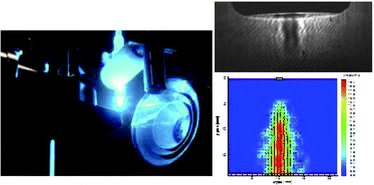Influence of design and operating parameters of pneumatic concentric nebulizer on micro-flow aerosol characteristics and ICP-MS analytical performances
Abstract
This paper describes the development of a very simple micro-flow pneumatic

* Corresponding authors
a Commissariat à l'Energie Atomique, CEA/DSM/IRAMIS/SIS2M/LIONS, CEA/CNRS/UMR 32-99, Centre de Saclay, Gif Sur Yvette Cedex, France
b Institut de Radioprotection et de Sûreté Nucléaire/DSU/SERAC, BP 68, Gif-sur-Yvette Cedex, France
c Commissariat à l'Energie Atomique, DEN/DPC, Centre de Saclay, Gif Sur Yvette Cedex, France
This paper describes the development of a very simple micro-flow pneumatic

 Please wait while we load your content...
Something went wrong. Try again?
Please wait while we load your content...
Something went wrong. Try again?
V. Geertsen, P. Lemaitre, M. Tabarant and F. Chartier, J. Anal. At. Spectrom., 2012, 27, 146 DOI: 10.1039/C1JA10255A
To request permission to reproduce material from this article, please go to the Copyright Clearance Center request page.
If you are an author contributing to an RSC publication, you do not need to request permission provided correct acknowledgement is given.
If you are the author of this article, you do not need to request permission to reproduce figures and diagrams provided correct acknowledgement is given. If you want to reproduce the whole article in a third-party publication (excluding your thesis/dissertation for which permission is not required) please go to the Copyright Clearance Center request page.
Read more about how to correctly acknowledge RSC content.
 Fetching data from CrossRef.
Fetching data from CrossRef.
This may take some time to load.
Loading related content
